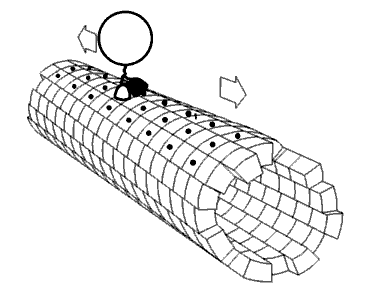
Photo from academic.microsoft.com
Cells rapidly change their volume in both optimal conditions and under duress, causing changes to their internal solute concentrations. Proteins are known to respond to such fluctuations in solution concentrations… Click to show full abstract
Cells rapidly change their volume in both optimal conditions and under duress, causing changes to their internal solute concentrations. Proteins are known to respond to such fluctuations in solution concentrations even faster, well before the cell can initiate regulatory response. We take advantage of this response to probe protein conformation and interactions in live cells, under biologically relevant conditions. We induce a cellular volume change in cells by subjecting them to a jump in media osmotic pressure. Protein dynamics are observed by FRET signal collected on an epifluorescent microscope from adherent cells expressing mCherry/GFP tagged proteins. Our experiments reveal protein conformational changes, as well as binding of weakly bound protein complexes, depending on the labeling scheme used. We observe that proteins can bind and unbind, and structures can expand and contract reversibly when the cell volume increases or decreases. Our results indicate that some proteins structures are more sensitive than others to cellular volume change, and that altering the internal concentrations within the cell can alter protein processes, including folding and binding.
Journal Title: Biophysical Journal
Year Published: 2017
Link to full text (if available)
Share on Social Media: Sign Up to like & get
recommendations!